 Evan Hunter (1926-2005) was one of the most prolific crime writers of the 20th century. He published more than 120 novels from 1952 to 2005 under a variety of pseudonyms. He also wrote several screenplays including Alfred Hitchcock’s The Birds and the 1954 novel Blackboard Jungle, which was turned into a film by Richard Brooks.
Evan Hunter (1926-2005) was one of the most prolific crime writers of the 20th century. He published more than 120 novels from 1952 to 2005 under a variety of pseudonyms. He also wrote several screenplays including Alfred Hitchcock’s The Birds and the 1954 novel Blackboard Jungle, which was turned into a film by Richard Brooks.
 Many of us know Evan Hunter (pictured) by his alter ego Ed McBain, and it was to this name that he himself designated his Grand Master Award from the Mystery Writers of America in 1986. McBain’s stellar reputation was founded on the police procedural series about the detectives of the 87th Precinct which stretched to 55 books. Beginning with Cop Hater in 1956 and concluding with Fiddlers some 49 years later, the series also produced spin-offs on the female characters McBain created. It’s the 87th Precinct that sparked my own lifelong passion for crime fiction, along with many other readers I’m sure.
Many of us know Evan Hunter (pictured) by his alter ego Ed McBain, and it was to this name that he himself designated his Grand Master Award from the Mystery Writers of America in 1986. McBain’s stellar reputation was founded on the police procedural series about the detectives of the 87th Precinct which stretched to 55 books. Beginning with Cop Hater in 1956 and concluding with Fiddlers some 49 years later, the series also produced spin-offs on the female characters McBain created. It’s the 87th Precinct that sparked my own lifelong passion for crime fiction, along with many other readers I’m sure.
Defined by their razor-sharp dialogue, drawing on the hardboiled tradition of American crime writing, there’s so much to discover in the 87th Precinct. Collectively, it has earned its classic status and has been hugely influential on generations of crime writers, and TV crime shows like Hill Street Blues and NYPD Blue.
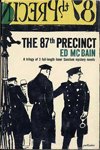 Model of a city
Model of a city
The fictional 87th Precinct is situated in Isola, McBain’s re-imagined version of New York, and is loosely similar to Manhattan. The surrounding districts correspond to the Big Apple’s other four boroughs – Calm’s Point would be Brooklyn, Majesta represents Queens, Riverhead the Bronx, and Bethtown is Staten Island. McBain was really able to personalise the romance of city life, often referring to its architectural wonders, which stretch up to the skies. However, he often tempered the majesty with references to urban decay and the dangers that lurk behind the façade. “Behind the buildings, behind the lights, were the streets. There was garbage in the streets,” he wrote.
He pulled open the curtains to reveal white-collar crime, marital jealousies and street-level murder, never shying away from the sordid underbelly of a rich and bustling metropolis. That bustling continues into the precinct’s police department with its core group of well-defined characters, exemplified by their patience, sense of duty and tough-mindedness. Although individual detectives assume centre stage in different novels, in most of the books Detective 2nd Grade Steve Carella has the starring role. A cast of about 14 others orbit around him – notably including Meyer Meyer, Cotton Hawes, Bert Kling and Arthur Brown.
These central figures often cross paths with other regular players. They include the wonderfully brash Detective Oliver Wendell Weeks (aka Fat Ollie) from the 83rd precinct; Monaghan and Monroe, a couple of work-shy and arrogant homicide detectives who are a consistent thorn in the side of the 87th Precinct team; and a small cast of regularly appearing forensic and legal representatives.
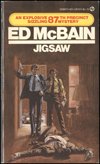 Cops as monsters, cops as humans
Cops as monsters, cops as humans
McBain’s credo was always to bring his detectives into fine focus, to build a relationship and kinship between characters and reader. “I only knew one thing about policemen: they were inhuman beasts,” he once said. “The problem was how to turn them into likable, sympathetic human beings. The answer was simple. Give them head colds. And first names. And keep their dialogue homey and conversational. Natural-sounding people with runny noses and first names had to be at least as human as you and I were.”
His detectives embody the very best and worst of human nature, too. They can be heroic, shrewd and sensitive, and bad tempered, crude and excessively violent sometimes. His detectives are a true mix of the good, the bad and the ugly, with the natural rivalries and conflicts arising from their pressurised jobs. The author pulls no punches in identifying the less than attractive attributes of certain team members, and the dislike that they or their actions give rise to.
We are also given full access not only to the pragmatism and professionalism of his band of detectives during the course of their investigations, but there are wonderful vignettes of their personal trials and tribulations. Some form romantic entanglements, and others have marital problems, financial struggles, and so on.
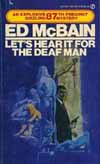 Where there are good guys, there must be villains too and McBain conjured up a regular band of snivelling informants, petty criminals, deranged killers and murderous spouses. There is only really one recurring arch-criminal in the series, The Deaf Man. Introduced in The Heckler (1960), he also appears in Fuzz (1968), Let’s Hear It For The Deaf Man! (1972), Eight Black Horses (1985), Mischief (1993) and Hark (2004), and is name-checked in other titles. He is a cold, calculating individual with a mischievous side to his nature, which sees him toying with the mental acumen of the detectives of the 87th using fiendish puzzles and wordplay. This brings a wry slice of humour and playfulness to the series, despite the moral emptiness with which The Deaf Man operates. Does he get his comeuppance? You’ll have to read the books to find out!
Where there are good guys, there must be villains too and McBain conjured up a regular band of snivelling informants, petty criminals, deranged killers and murderous spouses. There is only really one recurring arch-criminal in the series, The Deaf Man. Introduced in The Heckler (1960), he also appears in Fuzz (1968), Let’s Hear It For The Deaf Man! (1972), Eight Black Horses (1985), Mischief (1993) and Hark (2004), and is name-checked in other titles. He is a cold, calculating individual with a mischievous side to his nature, which sees him toying with the mental acumen of the detectives of the 87th using fiendish puzzles and wordplay. This brings a wry slice of humour and playfulness to the series, despite the moral emptiness with which The Deaf Man operates. Does he get his comeuppance? You’ll have to read the books to find out!
Follow procedure
Forensic detail and procedure were very important to McBain, and this lends the 87th Precinct books their authenticity. His credo was simple. “I usually start with a corpse. I then ask myself how the corpse got to be that way and I try to find out – just as the cops would,” he said.
McBain’s writing is driven by realism. The books are punctuated by facsimiles of forensic reports and police statements, and many investigations hinge on the clues that arise from these structured routines of detection. Despite the brevity of the prose, a number of cases are pursued simultaneously in most of the stories, holding your interest as different characters strive to resolve their cases, either through the traditional methods of detection… or by other means.
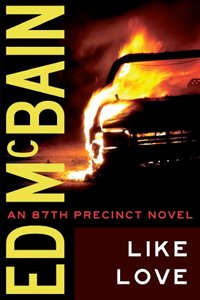 In my opinion, though, what’s genuinely enchanting about the series is how less linear paths – random thoughts, perhaps sparked by rambling conversations or coincidences – often lead our detectives to solve crimes almost accidentally. Yes, other writers use this technique, but one of my favourite plots is found in Like Love. Cotton Hawes realises, from personal experience, that a woman would always take off her suspender belt after her briefs, thus revealing a suicide as murder.
In my opinion, though, what’s genuinely enchanting about the series is how less linear paths – random thoughts, perhaps sparked by rambling conversations or coincidences – often lead our detectives to solve crimes almost accidentally. Yes, other writers use this technique, but one of my favourite plots is found in Like Love. Cotton Hawes realises, from personal experience, that a woman would always take off her suspender belt after her briefs, thus revealing a suicide as murder.
The race, religion and socio-economic characteristics of New York are reflected in city and in the 87th Precinct itself. Carella is of Italian origin, Detective Meyer Meyer is Jewish, Arthur Brown is black and Frankie Hernandez is our Hispanic detective. Initially, the crimes perpetrated are quite close to home for the police and their families, but as the series progresses McBain casts his net wider, encompassing racial tension across the city. The later books run everywhere from the black ghettoes to the uptown of white society, and all points between. Victims come from all walks of life and cultural backgrounds. Some commentators have been quick to decry the books as racist, sexist or anti-religious, but read in the context in which they were written – outside the grasp of political correctness – McBain seems to be merely reflecting the less progressive views so rife in society around when he wrote. More often than not he raises his characters and takes them beyond racial and gender stereotypes, going against the social mores of the period with a relatively fair and non-judgmental eye.
The last 87th Precinct story, Fiddler, was published in 2005, the year of McBain’s death. Maybe the best way to sum up the series is to look at Steve Carella, then and now. In 1956 he was a single man with a glamorous deaf-mute girlfriend. Of course, the cops of the 87th didn’t age at the same speed as us, and it’s interesting that only a prescient editor stopped McBain from killing off Carella at the end of the third novel, The Pusher. Over the years, he marries the beautiful Teddy, and they raise a family. By 2005, Carella’s twins are almost grown, and he is faced with the dilemma of how to deal with his child experimenting with marijuana.
In these slim, yet incisively written detective stories McBain charts the highs and lows if life as a detectives in the 87th Precinct – both personally and professionally. The predominant detectives change with the narrative throughout this mammoth series, but the focus on the central investigations never falters, as he combines both detective and procedure seamlessly. Punctuated by taut dialogue, the books give you the sense that the squad-room and the city are characters themselves. So’s little wonder that the 87th Precinct has been as influential as it has in the genre we love.
Raven recommends…
With 55 books in the series to choose from, it might seem daunting deciding where to start. Here are three of the strongest offerings from a very strong bunch.
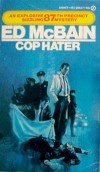 1 – Cop Hater (1956)
1 – Cop Hater (1956)
The first of the police procedural series, and by McBain’s own admission very closely influenced by the television show Dragnet. With its hard hitting opening – the murder of a detective Mike Reardon from the 87th Precinct – Cop Hater pulls no punches in its depiction of a killer picking off police officers. Despite the increasing jeopardy, there is a steely determination from Detective Carella and his cohorts to bring the killer to justice, with the tense atmosphere of the plot mirrored in the overarching intensity of the heatwave gripping Isola. Spare, gritty and a perfect introduction to the detectives of the 87th.
Buy now on Amazon
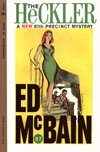 2 – The Heckler (1960)
2 – The Heckler (1960)
This is the book which introduces the recurring criminal The Deaf Man. Incorporating a direct reference to the works of Conan Doyle, this book shows us that Carella has his own Moriarty, who is revealed to be a cold, calculating individual who teases and torments the detectives of the 87th, holding the city to ransom while he attempts to pull off a $2.5 million heist.
Buy now on Amazon
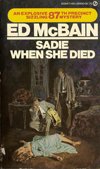 3 – Sadie When She Died (1972)
3 – Sadie When She Died (1972)
The 26th book of the series finds Detective Steve Carella investigating the death of the beautiful Sarah Fletcher, fatally stabbed during a burglary. Despite having all the forensic evidence and a signed confession, Carella has doubts to the guilt of his suspect, especially as Fletcher’s husband, a criminal lawyer, expresses such pleasure at his wife’s violent death. This is compounded by the discovery of Fletcher’s little black notebook, listing a series of clandestine trysts, and drawing Carella and partner Bert Kling into the seedy underbelly of Isola, and a world of sexual secrets. Nominated by crime author HRF Keating as his favourite of the series, Sadie When She Died is a darkly psychological thriller with a little diversion into Detective Kling unsuccessful love life.
Buy now on Amazon








